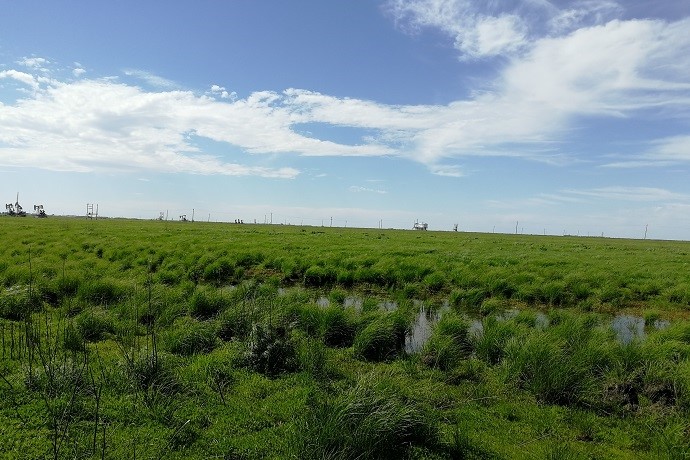Nitrogen (N), phosphorus (P) and potassium (K) control the growth and physiological responses of plants to hydrological stresses in wetland ecosystems. The response of nutrient stoichiometry to hydrological fluctuation has received much research attentions, however, how the trade-offs of nutrient elements of wetland plants respond to hydrological fluctuations remains unclear.
In a study in Ecological Indicators, a group led by Prof. TONG Shouzheng from the Northeast Institute of Geography and Agroecology (IGA) of the Chinese Academy of Sciences examined the nutrient stoichiometry and trade-offs of Carex schmidtii under different hydrological fluctuation conditions.
Nutrient stoichiometry and their trade-offs of wetland plants are profoundly affected by hydrological fluctuations with the changes in flooding depth, frequency and duration.
The researchers collected 216 plant samples from nine hydrological fluctuation treatments at the whole growth stage. They determined N, P and K contents and their ratios of Carex schmidtii, and investigated plant nutrient trade-offs and limitation under multiple hydrological fluctuation conditions.
The result showed that varied hydrological fluctuations contributed to the flexibility of plant nutrient, and broke the nutrient trade-offs of Carex schmidtii. Plant N and K contents and K:P ratio decreased with increasing initial water depth (DW). The N:K ratio increased with increasing water-level amplitude (AW) and lasted time.
The N:P ratio increased with increasing lasted time, showing P-limited growth for Carex schmidtii at the entire growth stage. Increasing AW and lasted time contributed to an increase of N:K ratio and showed a growing K limitation for Carex schmidtii.
The scaling exponents effectively quantified of the trade-off of N~P, N~K and K~P in Carex schmidtii. Carex schmidtii have strong internal stability of their nutrients and ratios, and effectively relieved changes in plant nutrient stoichiometry due to hydrological fluctuation.
Nutrient balances of Carex schmidtii were significantly affected by lasted time, but not DW and AW.
The study improves the understanding of the nutrient stoichiometry and response mechanism of Carex schmidtii to hydrological fluctuation, and provides invaluable information for nutrient and hydrological management for tussock wetlands.
Keywords:Nutrient stoichiometry, Nutrient trade-offs, Hydrological fluctuation, Tussock wetland
Contact
TONG Shouzheng
Northeast Institute of Geography and Agroecology, Chinese Academy of Sciences
E-mail: tongshouzheng@iga.ac.cn

Figure.1 Carex schmidtii tussock wetland (Imaged by QI Qing, 2020)